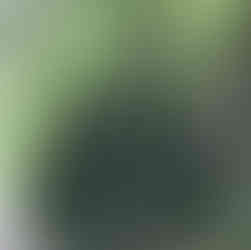Native Plant Gardens: Put Your Own Spin on Pages of Inspiration!
- Nuts for Natives
- Mar 15, 2023
- 3 min read
Think alternatives and three easy steps.

Dreaming of creating new garden beds or containers this spring? Inspiration photos abound from Pinterest to garden books to your neighbors. Wherever you find inspiration, you can train your eye and mind to recreate it with native plants! You'll get the beauty and fun of your inspiration garden with the buzz and life of a native plant garden!
Step One: Figure out the attributes of the plants in your inspiration photo.
Once you find the photo that speaks to you, try to identify the plants and attributes that drew you in.
In the photo above, the ornamental Kousa (Cornus kousa) dogwood tree is front and center. It has a vase shaped, multi-trunk structure and bright white flowers. The two ornamental perennials, variegated liriope (Liriope muscari 'Variegata') and a blue hosta (Hosta) add different colors and textures. The liriope are strappy, vertical and a light green. The hostas have larger leaves and a strong blue color. The contrast is sharp. The pink ornamental azalea (Rhododendron 'hybrid') behind the perennials adds a smaller leaf texture and a dark green color. I can't tell exactly what type of evergreen shrub is behind the planting but that's ok. I can see it adds a solid backdrop that keeps your eye focused on the plants in front.
If we were keeping a list from the inspiration photo, we might note:
-- multi-trunk tree or shrub to add spring blooms and year round structure
-- light green perennials
-- blue perennials (note to self: perennials should have contrasting texture)
-- low growing evergreen
-- large evergreen
Step Two: Identify Where You Will be Recreating the Scene in Your Garden
Once you figure out where in your garden you will recreate your inspiration, determine how much light the location gets, the type of soils and whether they are dry, average or moist. Once you have this information, you can look to identify the native plants that will replicate this.
Step Three: List your native plant alternatives
This is the fun part. Using your favorite on-line sources or native plant nursery plant finder or inventory, figure out which native alternatives will make your list.
-- multi-trunk tree or shrub to add spring blooms and year round structure
Two plants come immediately to mind. First, the iconic native dogwood tree (Benthamidia Flora). Spring blooms? Check. Year round structure? Yes, particularly once the tree begins to mature.
The second is serviceberry (Amelanchier canadensis). Serviceberries have white blooms in spring and often are sold as large multi-stemmed shrubs. Both of these are generally understory plants so do well in dappled or partial shade but will also grow in full sun. Both grow in average to moist soils. If the location for the new planting were drier, I'd select the serviceberry over the dogwood as being able to tolerate the drier conditions better than a dogwood.
-- light green perennials
There are so many to choose from. For strappy foliage, seersucker sedge (Carex plantaginea) is a natural alternative to variegated liriope and mostly evergreen, more so the farther south in the Chesapeake watershed you go. Another great one is heuchera 'Autumn Bride' (Heuchera villosa 'Autumn Bride'). It grows well in most conditions except full sun.
-- blue perennials
Blue color can be a bit harder to find but blue wood sedge (Carex flaccosperma) is just about perfect and adaptable to different light and soil conditions. Broad leaf sedge (Carex platyphylla) is another good candidate. The foliage is strappy though and we noted the inspiration perennials had different textures: one strappy and one with larger leaves. Given that, perhaps the best combo would be the strappy blue wood sedge with the larger leaved light green heuchera.
-- low growing evergreen
Inkberries (Ilex glabra) would have leaf shape, size and color similar to the azalea. The 'compacta' cultivar keeps to a lower height. They are also adaptable light wise and soil wise.
-- large evergreen
An American holly (Ilex opaca) or inkberry would do the trick. If the spot was shaded with moister more acidic soils, a rosebay rhododendron (Rhododendron maximum) might work as the backdrop.

Once you get the hang of this, you can recreate many, many inspiration ideas. As for me, I snapped a photo of this garden from a magazine I skimmed while visiting relatives in California long ago. I don't remember the publication, but the photo always sticks with me. As soon as I come across a sunny flat lot that needs a garden. I'll be set with a native alternative!

And then, sometimes, the inspiration is already native! Inspiration is everywhere. The Nuts for Natives alternative plant list is here. Happy garden dreaming.











































Comments